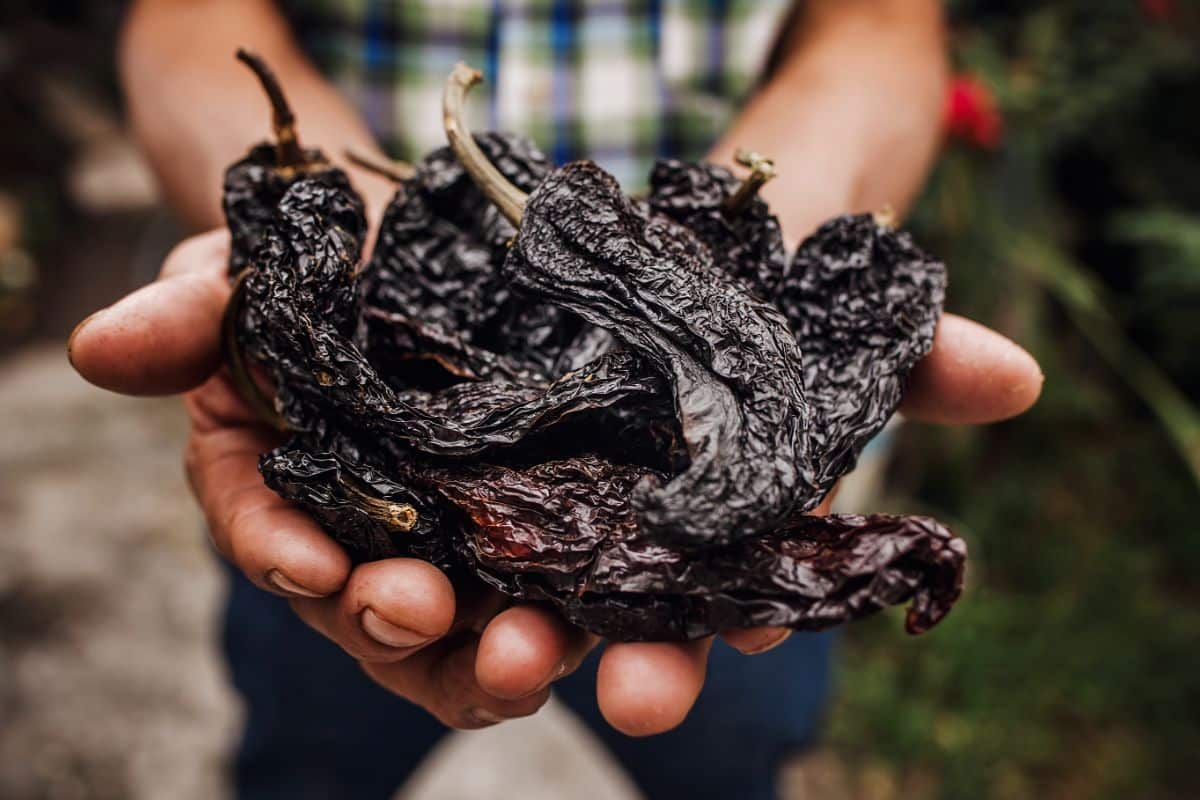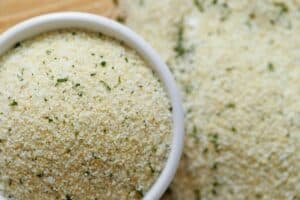Ancho chiles are some of the most alarming and exotic peppers that you have ever seen. Almost black in color, you might be forgiven for thinking that it is rotten, but they are an extremely fruity and flavorsome addition to a lot of dishes.

These chili peppers are towards the lower end of the Scoville scale, registering at around 1,000 to 2,000 units. This makes them one of the milder peppers, which is great for anyone who doesn’t like their peppers to be too overpowering.
But what happens if you can’t find ancho chiles at your local supermarket? How do they compare in terms of spice and flavor? Well, we have a rundown of some of the best ancho chile alternatives, so keep reading to find out more.
Ancho Chile Substitutes
Pasilla Peppers (7g)
Calories: 24
Total Fat: 1.1g
Trans Fat: 0g
Cholesterol: 0mg
Sodium: 6.2mg
Total Carbohydrates: 3.6g
Dietary Fiber: 1.9g
Protein: 0.9g
Substitute ratio: 1:1
Dried Anaheim Peppers (45g)
Calories: 20
Total Fat: 0g
Saturated Fat: 0g
Trans Fat: 0g
Cholesterol: 0mg
Sodium: 10mg
Total Carbohydrates: 3g
Dietary Fiber: 0g
Sugars: 2g
Protein: 1g
Substitute ratio: 1:1
New Mexico Chili Peppers (45g)
Calories: 18
Total Fat: 0.2g
Saturated Fat: 0g
Trans Fat: 0g
Polyunsaturated Fat: 0.1g
Monounsaturated Fat: 0g
Cholesterol: 0mg
Sodium: 4.1mg
Total Carbohydrates: 4g
Dietary Fiber: 0.7g
Sugars: 2.4g
Protein: 0.8g
Substitute ratio: 2:1
Chipotle Peppers
Calories: 14
Total Fat: 0.3g
Saturated Fat: 0g
Trans Fat: 0g
Polyunsaturated Fat: 0.1g
Monounsaturated Fat: 0g
Cholesterol: 0mg
Sodium: 3.9mg
Total Carbohydrates: 3g
Dietary Fiber: 1.2g
Sugars: 1.8g
Protein: 0.5g
Substitute Ratio: 1:1
Dried Poblano Peppers
Calories: 13
Total Fat: 0.1g
Saturated Fat: 0g
Trans Fat: 0g
Polyunsaturated Fat: 0g
Monounsaturated Fat: 0g
Cholesterol: 0mg
Sodium: 1.9mg
Total Carbohydrates: 3g
Dietary Fiber: 1.1g
Sugars: 1.5g
Protein: 0.6g
Substitute ratio: 1:1
Ancho Chili Nutrional Value (17g)
Calories: 48
Total Fat: 1.4g
Saturated Fat: 0.1g
Trans Fat: 0g
Polyunsaturated Fat: 0.8g
Monounsaturated Fat: 0.1g
Cholesterol: 0mg
Sodium: 7.3mg
Total Carbohydrates: 8.7g
Dietary Fiber: 3.7g
Protein: 2g
What Do Ancho Chile Peppers Taste Like?
These peppers are not that spicy at all, so if you like a mild flavor, then we would recommend these ones. They also have a fruity aftertaste, which is why people want to add them to their summertime salads.
This pepper is just a flattened poblano pepper, the ‘ancho’ part really refers to the shape of the pepper rather than the flavor or species.
When it is first picked off the vine, this pepper starts off green. But once it goes through an intensive sub-drying process, it becomes dark and reddish.
The reason to dry out these peppers is so that you can preserve them for longer. It also helps to bring out some of the natural flavors.
Best Ancho Chili Peppers Substitute
1. Pasilla Peppers
First up, we have pasilla peppers, which are very similar in terms of heat levels as well as also having a fruity aftertaste.
This is a popular pepper that can be used in salsa or salads, giving it that extra kick that will not overwhelm the other flavors in your dish.
You can buy these peppers from the market, or you can find them pickled in a jar. If they are pickled, then the flavor will not be as strong, but you will be able to keep them in your kitchen cupboard for far longer.
2. Dried Anaheim Peppers
This next type of chili pepper is another one that is of medium heat and has a fruity aftertaste to it. It is also a little bitter, so it is one for anyone who is a fan of strong flavors.
You can blend a few of these up to make salsa or alternatively, you can dice them up and add them to your curry. The fresher these peppers are, they’ll add more flavor to your dish.
Try to keep these peppers minimal in your meal, as they will upset your gut if you are adding too many. This is a great little accompaniment to meat dishes such as beef and pork. It also goes well with chicken.
You might often find a pile of these dried peppers at your local Asian food market. They are a deep red and usually are flattened during the drying out process. This is a popular pepper to add to many Mexican dishes.
3. New Mexico Chili Peppers
These next chili peppers have a very rich flavor that is not overwhelmed by too much heat. These peppers are bright red, which makes them a very attractive addition to your pizza or salad (if the presentation is important to you, that is).
If you are shopping for these at your food market, then you might see these hanging from the ceiling in larger bunches.
These peppers contain all different sorts of flavors, including sweet, sour, and bitter. This is great for anyone who likes that little bit of complexity in their diet. However, these are still spicy peppers, so you’ll need to be careful when you are handling them during cooking.
These peppers are used in Italian and Mexican cuisine mostly. You can make these into soups or cook them with curries. This pepper goes very nicely with fresh garlic.
4. Chipotle Peppers
Both Chipotle and ancho peppers are very similar, as they both come from the process of smoking jalapenos. The only difference with Chipotle is that it is roasted in adobo sauce.
These peppers are much hotter than ancho peppers, registering between 2,500 and 8,000 units on the Scoville scale. If you are substituting ancho for chipotle, you might want to add a little less to reduce the intense heat.
As with a lot of these peppers that we’ve listed, you’ll want to make sure that you handle these with care, as they can burn your eyes. You can add this pepper to chilis that you can use to fill your tacos and enchiladas.
5. Dried Poblano Peppers
These next peppers are basically ancho peppers, except that they have a different shape. This has a smoky flavor to it. It is also relatively mild, coming somewhere between 1,000 and 2,000 units on the Scoville scale.
The only reason why more people don’t use this pepper is because it can be quite tricky to prepare. It has a tough skin, which makes it hard to fry and even harder to bake. This is a great alternative if you want significantly less heat than an ancho pepper.
Popular Recipes That Call For Ancho Peppers
Ancho Pepper Sauce
This pepper sauce is delightful, rich, and spicy, it is the perfect addition to any chili, either in the dish itself or as a side.
Ancho Chili Pasta
If you like your seafood pasta dish with some heat, why not try this recipe? It contains shrimp, olive oil, and parmesan.
Conclusion
Hopefully, our list of ancho pepper substitutes has given you plenty of food for thought. You should always check the Scoville level before adding peppers to your dish.







